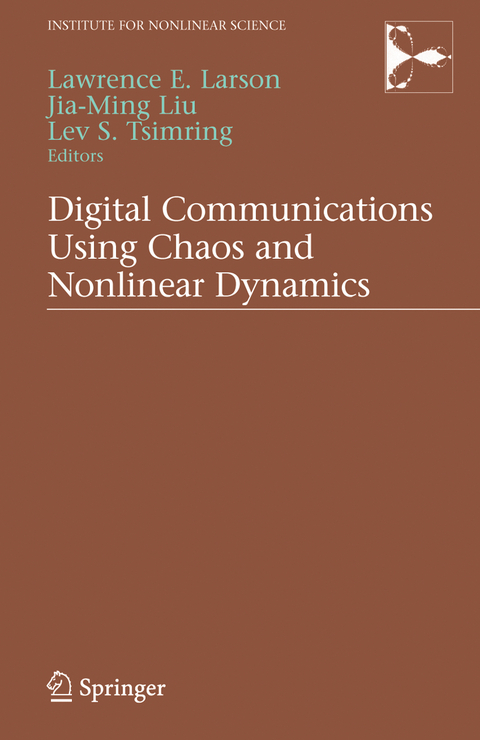
Digital Communications Using Chaos and Nonlinear Dynamics
Springer-Verlag New York Inc.
978-1-4419-2130-7 (ISBN)
An Overview of Digital Communications Techniques Using Chaos and Nonlinear Dynamics.- Digital Communication Using Self-Synchronizing Chaotic Pulse Position Modulation.- Spread Spectrum Communication with Chaotic Frequency Modulation.- Ultra-Wideband Communications Using Pseudo-Chaotic Time Hopping.- Optimum Spreading Sequences for Asynchronous CDMA System Based on Nonlinear Dynamical and Ergodic Theories.- Nonlinear Phenomena in Turbo Decoding Algorithms.- Security of Chaos-Based Communication and Encryption.- Random Finite Approximations of Chaotic Maps.- Numerical Methods for the Analysis of Dynamics and Synchronization of Stochastic Nonlinear Systems.- Dynamics and Synchronization of Semiconductor Lasers for Chaotic Optical Communications.- Performance of Synchronized Chaotic Optical Communication Systems.
| Erscheint lt. Verlag | 24.11.2010 |
|---|---|
| Reihe/Serie | Institute for Nonlinear Science |
| Zusatzinfo | 196 Illustrations, black and white; XIV, 382 p. 196 illus. |
| Verlagsort | New York, NY |
| Sprache | englisch |
| Maße | 155 x 235 mm |
| Themenwelt | Mathematik / Informatik ► Informatik ► Theorie / Studium |
| Mathematik / Informatik ► Mathematik ► Analysis | |
| Mathematik / Informatik ► Mathematik ► Angewandte Mathematik | |
| Naturwissenschaften ► Physik / Astronomie ► Astronomie / Astrophysik | |
| Naturwissenschaften ► Physik / Astronomie ► Mechanik | |
| Naturwissenschaften ► Physik / Astronomie ► Theoretische Physik | |
| Naturwissenschaften ► Physik / Astronomie ► Thermodynamik | |
| Technik ► Nachrichtentechnik | |
| ISBN-10 | 1-4419-2130-3 / 1441921303 |
| ISBN-13 | 978-1-4419-2130-7 / 9781441921307 |
| Zustand | Neuware |
| Informationen gemäß Produktsicherheitsverordnung (GPSR) | |
| Haben Sie eine Frage zum Produkt? |
aus dem Bereich


